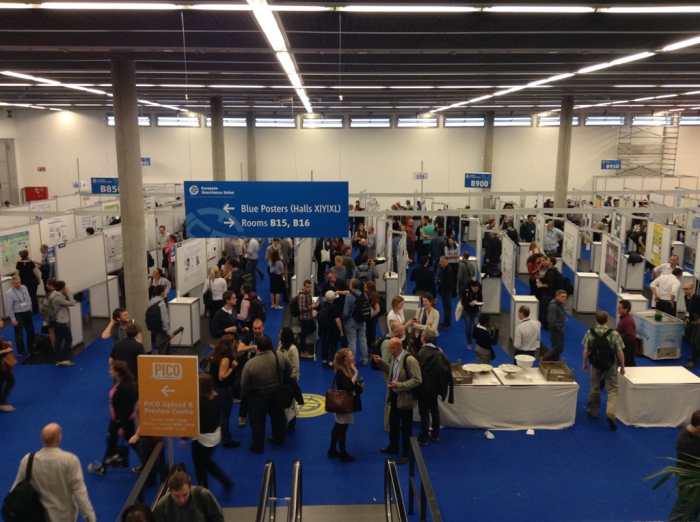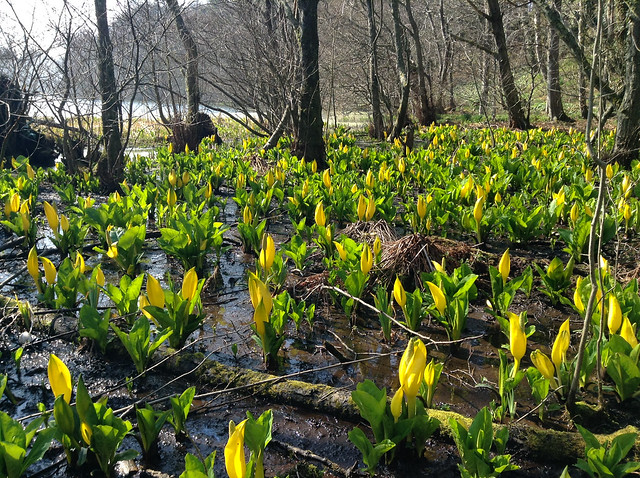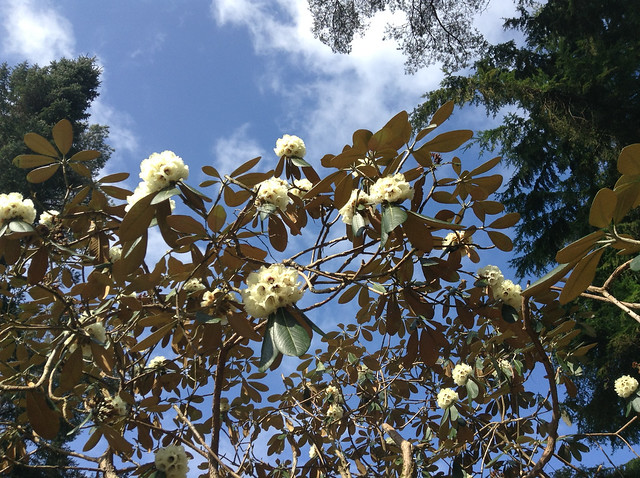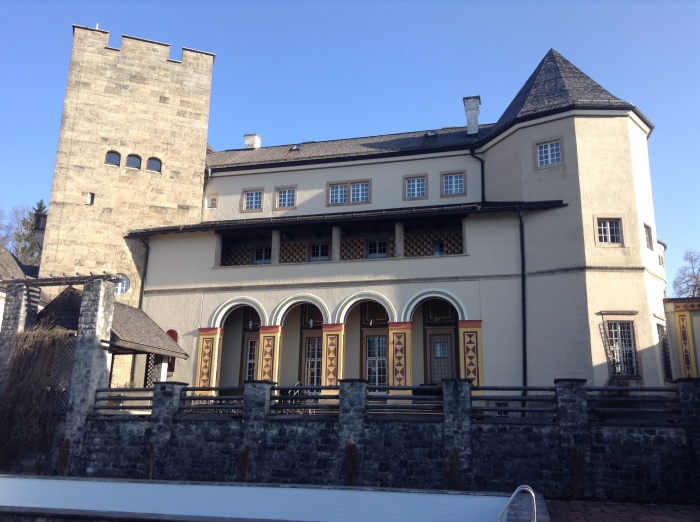If it’s April, it must be Austria. So far, our plan to travel less now we are back in the UK seems to be being mostly honoured in the breach. To be fair, we are travelling fewer miles and suffering less jet lag, and both these factors probably help to explain why we are still spending quite a lot time away from home. As you may have seen, we entered the Vienna Marathon (and half), and the subsequent need for recovery gave us a good excuse for week of lazily sitting around, eating and drinking. It didn’t turn out quite as lazy as we’d expected…
Somehow we managed to get in for 8:30 on Monday morning, where I started off in a hydrology session about data, models, model building and prediction. I had put my poster into this, not because it was really that great a fit but because hydrologists have been thinking about these issues for a lot longer than most climate scientists and have a range of interesting ideas. Keith Beven is one of the famous names in the field and he gave an good general talk about determining when and whether models might be fit for purpose. The session was a good choice for me, I picked up a couple of new (to me at least) ideas that might well come in handy. There was an unfortunate clash with an NP session on building models from data, so jules attended that one. In the afternoon there was nonlinear time series analysis, wavelets and the like, including Bo Christiansen explaining his 2014 paper on regression, which I found much more digestible as a presentation than I had when reading the paper.
Tuesday started with the data assimilation session, including some steady progress towards the practical use of particle filters. To be honest, I’m surprised how long this has been in the pipeline, as some bold claims were being made for it several years ago. Another interesting talk was Alexis Hannart on the use of data assimilation in detection and attribution. Two relevant papers are here and here. I’m not sure exactly what it all means yet but it’s a promising idea at least. jules went to the seasonal/decadal prediction session and reported that it was the same as usual…some spots of skill but at longer time scales this is essentially due to the forced response rather than the precise initialisation.
Wednesday was the big paleoclimate day, with jules’ co-organised session including the Milankovitch Medal lecture, all the latest paleo research and some work specifically linking past and future climate change. However, before that, we both managed to see Bjorn Stevens’ talk on why aerosol forcing is lower than most people had previously thought. This was a longer and more detailed version of what he had said at Ringberg, and seemed fairly convincing to me. Then on to the paleo, which started with Paul Valdes giving a great medal lecture covering several new pieces of work from his group covering multiple time scales over the last 500 million years. We were amused by one of the questioners afterwards managing to drop in the line “As I said in my medal lecture a few years ago…”. In the rest of the session, there was interesting stuff on re-interpreting some ocean proxies which brought them more into line with other evidence from data and models, and some analysis of model simulations.
By Thursday i was flagging a bit, and the program was a bit less busy. I went to the sesssion on the Last Millennium, where someone had discovered a new volcanic eruption, someone else was debating about the significance and cause of various wiggles, and several others were considering the question of what we can really expect to learn from the proxy data anyway. Rob Wilson had a potentially provocative title along the lines of “Are the tree rings fit for purpose?” and I was hoping for a bit of a bunfight but he pulled his punches a bit. After a long, large and loud dinner on Thursday evening with the Bristol crowd, Friday was fortunately very quiet. The highlight was the EGU Great Debate on open access publishing, which can be streamed from the EGU web site. A couple of commercial publishers on the panel tried their best to justify the continuation of closed journals with the rather bizarre justification that scientists wanted them (only because they can’t/won’t pay the extortionate open access fee!), but even they acknowledged the inevitable growth of the open access movement. Uli Poschl was fairly direct without being too aggressive, saying that we (scientists) were going to do it anyway, so commercial publishers could either adapt or fail. There were a few red herrings raised in the discussion, but overall it was an interesting event. After 4 consecutive evenings of dining out with various people, we gave the convenors’ party a miss and had an early night instead.
Throughout the week, we gained the impression that a lot of younger scientists had not attended and their work was instead being presented by their supervisors. This rather undermines the EGU goal of trying to allow younger scientists to gain some visibility. No good picking a couple of early career scientists for your oral session if they don’t have the funding to turn up! But of course there have always been absentees and I don’t know if this is really a trend or just chance in what we happened to see. The conference attendance was marginally down on previous years, but there’s no sign of a trend there either.
Throughout the week the poster sessions were enjoyable and well-attended, though I wish all divisions would adopt the CL convention of using the evening session for posters only, and not scheduling talks. It would have been more convenient to be able to talk to all the poster presenters at the same time.
Viennese food was fun as always, perhaps a bit less exciting now we are not in Japan and can get big hunks of meat and good beer any time we like. What with no longer being bound by Japanese rules, we decided to stay an extra day in Vienna at the end. As it happened, it was a cold and windy day, we didn’t really have the energy for much sightseeing but did walk most of the way round the town. In the evening, we found a concert in Karlskirche – Mozart’s Requiem with an orchestra on traditional instruments. The singers were very good but the pews were very hard and the accoustics were rather odd. It was an interesting experience that I wouldn’t rush to repeat. Next year the Vienna marathon is a week earlier than the EGU, so we certainly won’t be doing both of them, and quite possibly neither.













